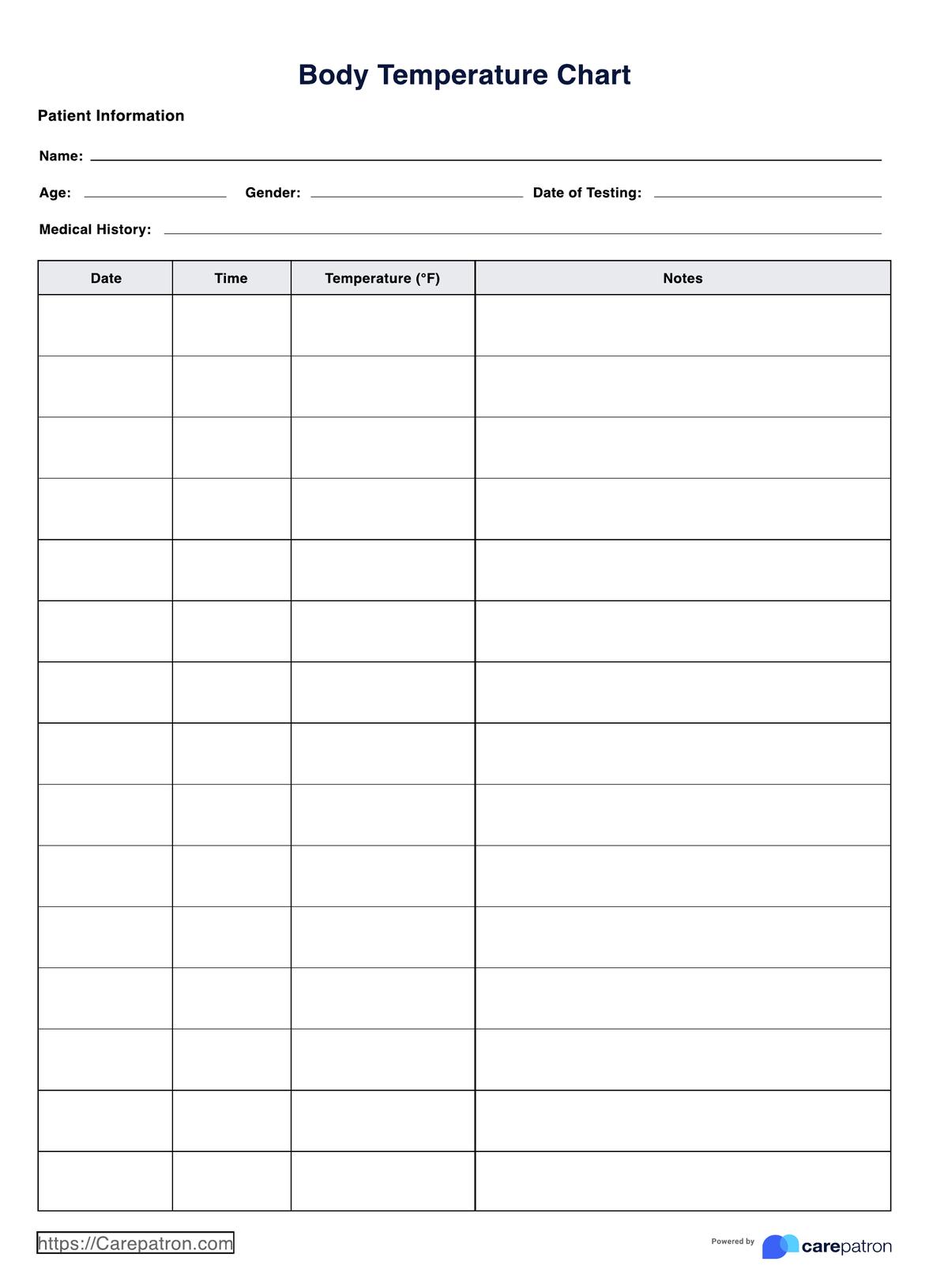It depends on the reason for taking your temperature. Generally, taking your temperature once a day at the same time, preferably in the morning, before eating or drinking anything is recommended.

Body Temperature Chart
Track body temperature accurately with our printable chart templates. Download for free and easily record temperature readings to monitor your health status.
Use Template
Body Temperature Chart Template
Commonly asked questions
A fever is typically defined as a body temperature of 100.4°F (38°C) or higher. However, a fever can also be determined based on age, underlying health conditions, and other symptoms.
Using a digital or mercury thermometer, you can accurately measure your body temperature. For an accurate reading, follow the instructions with the thermometer and place it in the correct location, such as under the tongue or armpit.
EHR and practice management software
Get started for free
*No credit card required
Free
$0/usd
Unlimited clients
Telehealth
1GB of storage
Client portal text
Automated billing and online payments











